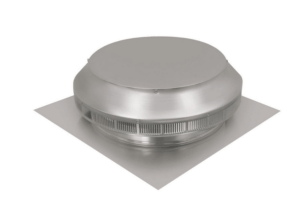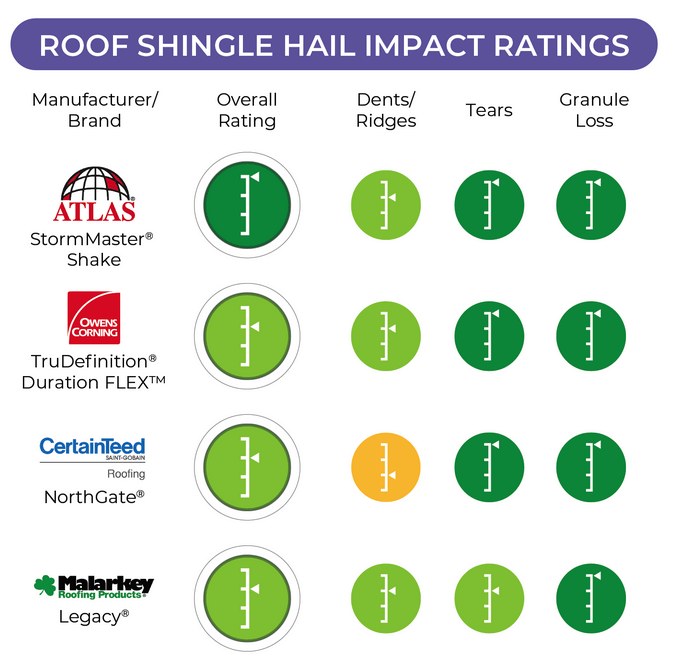At the beginning of July, with the help of friends and family, I replaced the roof on my house. It was hard work, with a lot of planning, and we needed all that help to get it done as quickly as we did. I’m really glad I did it myself, and would make the same decision to do it again in a heartbeat. I was fortunate to receive an insurance claim for hail damage that covered the costs (and then some). Here’s how it all went down.
Part 1 was about the knowing and the planning, this part is about materials.
Materials
There are a lot of roofing brands out there, and most of them are comparable. Since I was doing it myself, I wanted the best shingles I could afford. This meant standard asphalt shingles. When doing my research, I used a combination of YouTube reviews, Reddit posts, and some ratings websites to help figure out the best option. That research pointed me toward rubber polymer based impact resistant (Class 4) shingles. These rubber polymer shingles resist hail impact, are more flexible, and tend to be more durable than standard shingles.
The other thing I was looking at was warranty. Most companies don’t give great warranties unless it is installed by a contractor who has a certification/partnership with the manufacturer. This makes it hard for a homeowner to get much more than a 10 year warranty.
Finally, cost was a small factor, but it ended up not mattering in the end, due to the amount of insurance money I got from my hail claim. After considering my options, I wanted the best shingles I could buy and the best warranty. Cost would only be a tie breaker, but the choice was pretty clear in the end.
Shingles/roof system
I went with the Atlas StormMaster Shake shingles. They are the top rated rubber polymer impact shingles and have the best warranty that I can get as a non-contractor. To get the best warranty, I had to use their entire roofing system (shingles, starter strip, ice and water barrier, underlayment, hip and ridge shingles), but I was able to get a 20 year warranty. I bought them from Menard’s and got a sizable 11% rebate.
They advertise a bunch of benefits over their competition, and even though I didn’t have the experience to compare the differences I appreciated the ease of install and those differences likely make a difference. Here are the advertised benefits:
- Larger shingle size = fewer nails, slightly faster install
- 130 mph wind rating with 4 nail install = fewer nails, faster install, better glue strip
- Scotchguard = no streaking/mildew/algae/staining on the roof from trees/leaves
- Good sized nailing strip = easier to aim the nailer. I think Owens Corning shingles have a better nail strip, but Atlas is better than average.
Competition
The only other option I seriously considered was the Owens Corning Duration FLEX. This is OC’s rubber polymer impact shingle. The max warranty I could get was 10 years, and the overall cost would have been higher, for a lower rated shingle.
Other common brands in my area are GAF, Certainteed, and IKO, but I didn’t consider any of them. GAF is available at Home Depot, but their impact shingles aren’t as good and they aren’t available. From what I gather, GAF is the most popular shingle nationwide, but not because they are the best…they just spend a lot on marketing. They aren’t bad shingles, but not the best. IKO and Certainteed aren’t available through big box stores, and I wasn’t really interested anyway. I wasn’t interested in going through a supply company who typically sells to contractors.
Flashing
I went with an open metal valley, and used standard drip edge. I got all my flashing from Menard’s, including step flashing, reglet (counter) flashing (for the chimney), and dormer (apron/chimney) flashing. Everything was black painted, and if it wasn’t, I painted it with primer/paint myself.
Vents
I up-sized my vent from what was there to meet code/spec for the shingles. Most roofers will use a roll-out plastic ridge vent. I have a hip style roof with a chimney in the middle, plus I didn’t want to patch the existing holes, so I just opted for 2 larger round aluminum vents. The quality was good and the install was simple. I also replaced my bathroom vent. Even though it was only a few years old, I didn’t want to mess with salvaging the old one that already had nail holes and sealant all over it.
Pipe Flashing
The old plumbing vent pipe flashing was (poorly) painted lead flashing, and after doing my research, I decided to replace with the same kind of lead flashing. The only downside to lead is that sometimes squirrels can chew on it. I don’t get squirrels on my roof, and the old flashing was fine, so I just went with it. Many roofers will use cheap plastic and rubber pipe boots, but the rubber will break down and dry out over time and may not last the life of the roof. There are some other options out there, but the lead was easy to work with and works great.
Other stuff
Nails, sealant, plastic cap nails, etc. I got all from Menard’s. If you care to know about the brands I used, comment and I’ll share.
Thoughts on materials
- Sales! If you have a place to store things, you could get sale prices and save some money. I stored things in one half of my garage, which was annoying but useful. I mostly just got Menard’s rebates, but in a normal year I could have got some deals because of sales.
- Atlas is a brand that is probably overlooked. Aside from the poor traction on their ice and water barrier, I had a great experience with the Altas roofing system and would recommend them whole-heartedly. They have an excellent warranty (hopefully I won’t need to use it) and they make a high quality product.
- Delivery: if you can get the shingles delivered to your roof, it is totally worth the cost. They charged me $1 per bundle to lift them up to the edge of the roof. I was still required to stack them on the roof, but not having to carry seventy-seven 70 lb bundles up a ladder was worth it. Most big-box stores will offer this service.


Recent Comments